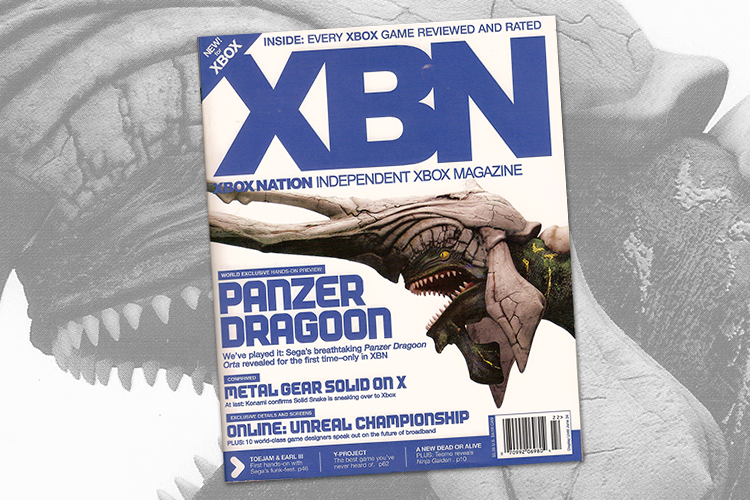
When SEGA announced that they were discontinuing the Dreamcast in 2001, like many SEGA fans I was in a daze. What competitor console would I buy to continue to enjoy SEGA games? How could I keep up on SEGA news with the cancellation of the fantastic Official SEGA Dreamcast Magazine? With the knowledge that certain internal development teams would be shifting focus to specific consoles, fans had to decide if they were to become a Sony, Microsoft, or Nintendo owner (or all three if you were one of those spoiled kids). As a fan of Sonic the Hedgehog and Jet Set Radio, the decision was clear. I was to become an Xbox owner. SEGA told fans that Sonic would be multi-platform, despite Sonic Team’s Nintendo leanings, and that Smilebit would be releasing games to the Xbox. These were deciding factors for sure, but what really tipped me over the edge into pledging allegiance to the Xbox was Xbox Nation, the independent Xbox magazine.
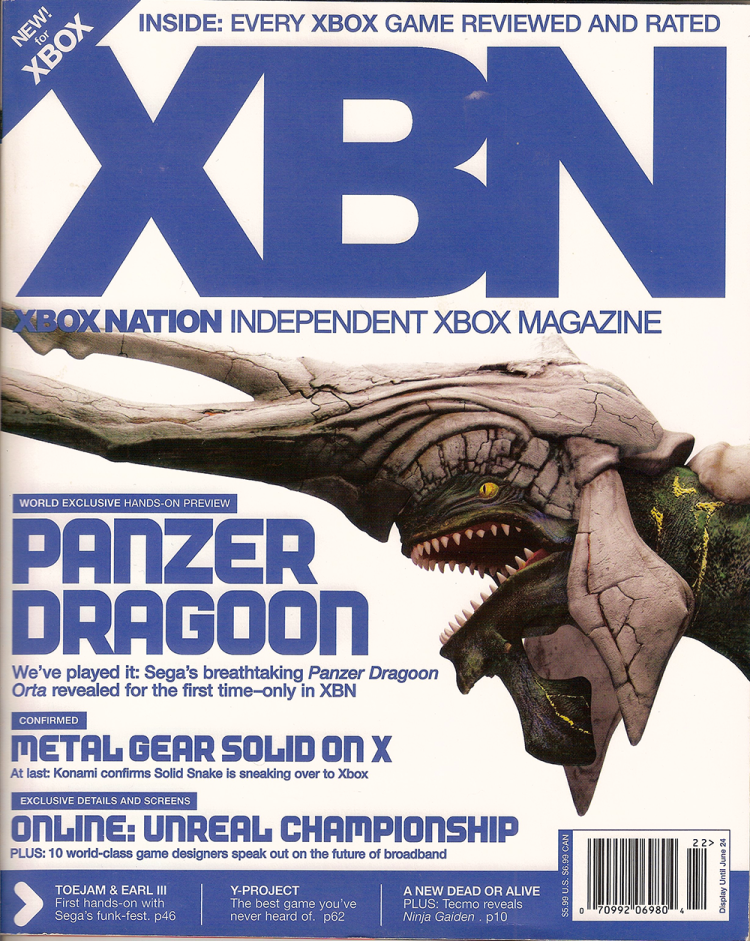
Xbox Nation was, and quite possibly is, one of my favorite non-SEGA gaming magazines. For starters, the team behind Xbox Nation (or XBN, as they referred to it as) was largely made up of former Official Dreamcast Magazine (ODCM) staff including Simon Cox, Evan Shamoon and Greg Orlando. XBN had the same emphasis on excellent graphic design and large screenshots that ODCM had, and even carried over the same voice of ODCM. It’s difficult to describe, but I always thought of ODCM and XBN’s voice as the ideal video game fan, knowledgable but not annoying, and cool enough to not be perceived as a nerd or a poser.
But there was something XBN had that ODCM did not have, which was independence. While Simon Cox assured us that being an official SEGA magazine did not stop them from speaking the truth when we spoke with him in 2013, Microsoft was a whole other company entirely. I would have to guess that had XBN been an official magazine we would not have seen articles that blatantly lay out just how bad Xbox was being perceived in Japan, and covers dedicated to non-Microsoft games. XBN did not hide their SEGA allegiance, as the first issue’s cover story was not a Microsoft title but rather SEGA’s Jet Set Radio Future! Issue 2 featured Namco’s Dead to Rights, and issue 3 – today’s focus – featured Smilebit’s Panzer Dragoon Orta.
XBN’s preview, which we’re featuring in full below, was an impressive eight pages long, featuring a bevy of screenshots, a preview, a developer interview with Smilebit and former Team Andromeda staff, and a series retrospective featuring a short chronology of the series. So transport yourself back to the summer of 2002 and enjoy this classic SEGA article by XBN freelance writer Jason Brookes!
Ad:
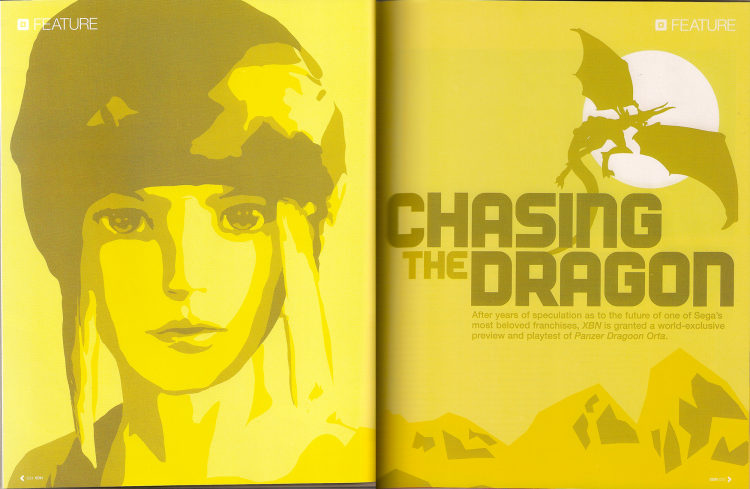
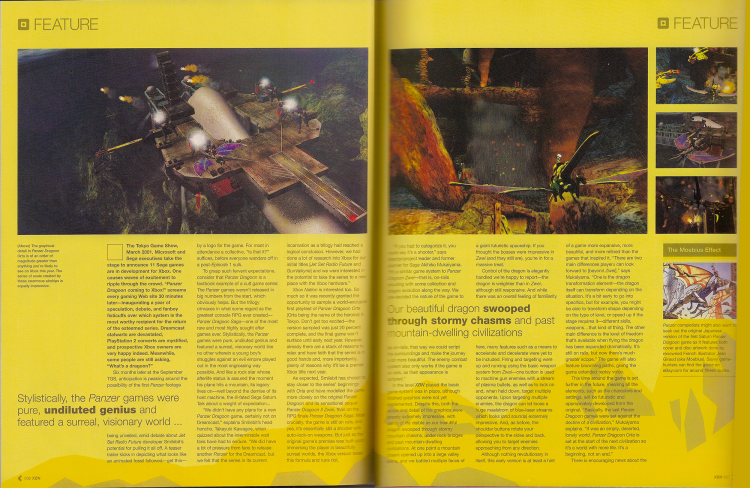
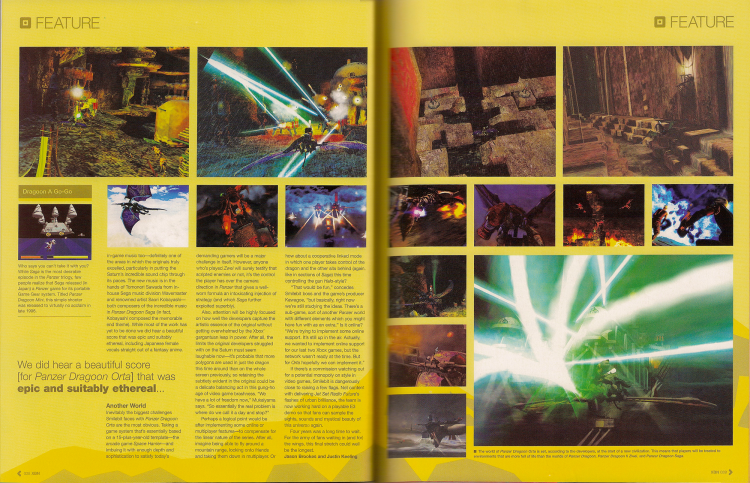
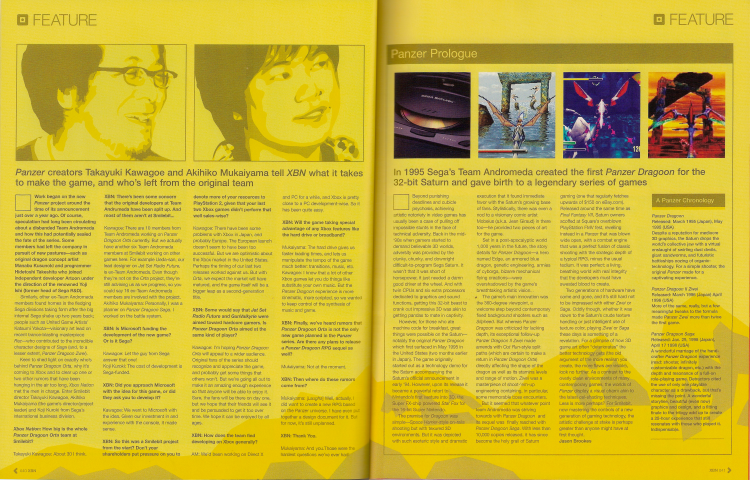
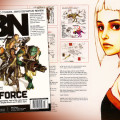
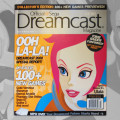
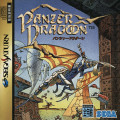

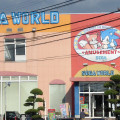
For anyone wondering what happened to the two SmileBit chaps.
Takayuki Kawagoe climbed up the coporate ladder at Sega, overseeing all software development. Now he is at the Sega Sammy executive board, doing things other than videogames.
Akihiko Mukaiyama didn’t direct major games after Orta, he did planning for PSU, was producer on some Mystery Dungeon games…he left Sega and is now part of Grounding Inc which has a good part of former Sega devs, which did Crismson Dragon.
Thanks for that cool bit of history!
I knew Mukaiyama worked on Crimson Dragon, but totally forgot about Kawagoe’s new role.
It’s nice to know that a lot of former Team Andromeda staff worked on Orta. Some fans, including myself way back when, assumed new team name meant a whole new team.
When Sega was still relevant as a console third party…
When we will see those big project again?
The issue is most SEGA fans don’t really support in-house projects for ‘not being on some console’ they own. Orta failed due to being on Xbox. Rise of Nightmares was ignored on Kinect, Binary Domain failed, and Yakuza western releases don’t sell that great.
The question is, when are SEGA fans going to start caring about SEGA in-house games again?
Did you support the new re-release of 3D Out Run at least? Oh, probably not, huh?
Are you sure sega fans are the one to blame?
The fans I know, me included, supported almost every release we could (of course if you’re crazy like some Sega PR to believe that a single fan should buy every version of Sonic 4 so they can profit…), I even bought rise of nightmares and I still don’t own a kinect.
But it would be a little difficult to support 3D Outrun without owning a 3DS, if it was a retail release I could still buy it without the console.
The fact is simple, Sega fans always bought Sega games, but since Sega gone thid party, fanbase was divided on 3 or more consoles, becoming real difficult for fans to make some numbers.
Sega should’ve know this when they foolishly decided to abandon the dreamcast, instead they only blamed the fanbase, the games and the in-house teams, and now 10 years later, with a legacy ruined, teams ruined and a fanbase disappeared, they continue to fail even chasing casuals etc.
It’s not easy to fail with a quality TPS like Binary Domain in the era of TPS…
So what’s exactly the Sega plan, waiting for fans to start buying games again? What games if they don’t release any? Fans will only continue to left Sega behind if things doesn’t change and they don’t return to the great games like Panzer Dragoon Orta for what Sega was known.
Perfect, Sega going 3rd party did not fix Sega’s problems, it did provide temporary sales boasts on alternate hardware where the Dreamcast had not yet had the right portion of time to be mass marketable, it was barely on shop shelves for a year and a half in the western world and it was beginning to really take off before the sad day in early 2001 that Sega decided to abandon their console series, it was exactly for that reason that Sega had to do as it did, or so it was claimed, as ironically, the Dreamcast was doing so well that every Dreamcast that was sold, Sega was losing something like 14£/$ on production costs per system as they made the system cheap by dropping the RRP in order to shift more units commercially fast enough to make the holiday 2000 fall a success by clearing warehouse inventory and capitalising on Sony’s failure with the PS2 launch, that season, it shifted so many Dreamcasts, that the manufacturing costs and losses per system sold was calculated the following month in Jan 2001 and they knew it was going to be another loss in profits as a result and they made the decision to change the strategy they’d been working on for 18 years up to that point, rather than disappoint investors again as they had been for years up to that point. It was the rising success of the Dreamcast that ultimately was the reason it had to be stopped, as it was becoming too expensive to maintain for the company that wasn’t covering the costs of production thanks to cutting the price too early, their logic for doing so was a strategic move to contend with the PS2.
*It’s a perfect statement because it’s often all too well ignored that Sega doing what they did ultimately split their fan base, it means to get everything they’d have to invest in 3 home consoles and 2 handhelds at a time to keep up rather than just have one Sega console that has everything on it.
They are still making great games. Maybe not as many these past couple years though. These kind of blanket statements are annoying.
For me it was the cover of OXM with Orta and the dragon that made me almost drop my groceries. I had to buy that magazine and then I was going to get an XBOX.
Sega should never have exited the home console business in hindsight, it wasn’t so much ‘the end’ for Sega full stop, but a gradual beginning of the end, yes Sega was losing money on every Dreamcast console thanks to being forced into a price war with Sony where they slashed the retail cost of the Dreamcast. Thing is though, if they only waited another year – maybe not even that – they’d have survived their console heritage as the Sega-Sammy merger immediately turned them into the biggest gaming company over night, sure Sega-Sammy holdings would have a bit more influence on the running and production of Dreamcast, but it would at least survived as a viable console and probably likely be as big as what the Xbox is now – originally that was Sega’s position, before Microsoft came in as they left.
Thanks again for the kind words about Xbox Nation. We tried our darndest.